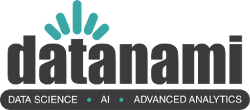2020 – COVID-19 — Kicking Digital Transformation Into Overdrive
Earth threw humanity a curveball in early 2020 with the emergence of the ultra-contagious SarsCoV-2 virus from China and its spread around the world. Over the ensuing months, hundreds of millions of people would be infected with COVID-19, millions would die, and billions more would be impacted by unprecedented economic shutdowns imposed by governments in attempt to stop the spread.
It was an all-hands-on-deck moment for organizations of all types, including national, state, and local governments; for-profit companies; and universities and research institutions. Enormous amounts of public and private capital were dedicated to fighting COVID-19, and big data, analytics, and AI played a central role in the battle.
For starters, data, analytics, and AI were essential to understanding the disease, how it spreads, and what we can do to stop it. From the earliest days of the pandemic, Johns Hopkins University’s COVID-19 Dashboard, based on Esri’s ArcGIS, was viewed as the defacto standard for tracking infections across time and space, although many, many more visualizations and dashboards would be created.
Social media was a source of infection data from the earliest days, such as BlueDot’s outbreak tracker. Graph databases, such as those from Neo4j and TigerGraph, were also a natural fit for understanding how the virus spreads among groups, and nearly every graph database developer devoted resources to fighting COVID-19. We also saw an unprecedented amount of data sharing going on, as people put each others’ lives ahead of possible profits, as AI was brought to bear to mine public data sets.
We have made immense progress in understanding genetic data, and COVID-19 provided a testbed for putting that progress to use. You will recall that, just hours after a Chinese scientist shared the genetic blueprint for SarsCoV-2, American researchers had working models of treatments. Moderna’s groundbreaking mRNA vaccine was created in just two days (although months were needed to complete the clinical trials required to prove its safety). The combination of AI and HPC helped IQVIA, for example, scour the drug pipeline for possible treatment candidates.
However, COVID-19 also laid bare some of the ongoing troubles we’ve experienced with data. For starters, just getting COVID case counts from hospitals and clinics proved to be a major undertaking, as it exposed the largely manual data collection methods still used in the United States’ decentralized healthcare system. Coming up with a set of common data definitions, such as what constitutes a case and what constitutes an open bed, proved immensely challenging.
In light of this data governance breakdown, contact tracing efforts suffered. So did the accuracy of predictive models. COVID-19 has also exposed problems with data transparency, a core ingredient in fostering a positive data culture. Data privacy issues also emerged, particularly with contact-tracing mobile apps, which some countries mandated their citizens to use.
However, COVID-19 also provided the opportunity for data, analytics, and AI to shine, particularly with billions of people sheltering at home. From unexpected discoveries in customer call logs to detecting shifting customer sentimenttrends among shoppers, there were many positive use cases that Datanami shared (you can see the entire archive of COVID-19-related stories at this link).
From a practical perspective, AIops became a must-have as Web and mobile apps struggled under rapidly shifting loads. Cybersecurity professionals were forced to stay on their toes thanks to the large uptick in security threats, in particular ransomware attacks, which have skyrocketed under COVID.
COVID is also helping to rewrite the rules of the consumer goods supply chain, which buckled under the pandemic. Companies that had previously invested in advanced analytic approaches to managing their supply chains were able to move with COVID’s punches; many of those that didn’t make the investments are now out of business. Retailers like CVS sought (and found) innovative ways to detect customer signals amid the COVID noise. If omni-channel wasn’t an imperative for retailers before COVID, it certainly was after.
With in-person shopping all but dead, companies needed new ways to reach customers. This was difficult for companies that relied on foot-traffic. With Web and mobile apps the new face of companies, billions were invested in digital transformation and cloud projects. With clo revenues up an astounding 51% in Q2 2002, Microsoft CEO Satya Nadella remarked that he had just witnessed two years’ worth of digital transformation in two months.
After an initial drop in demand for data and AI professionals due to COVID lockdowns, demand came storming back in late 2020, and surged to new highs in 2021. As the economy heated up in the second half of 2021, competition for data professionals reached a fever pitch, with many data professionals reporting high levels of burnout.
It’s becoming increasingly clear that COVID-19 marked a turning point for the industry. The pandemic accelerated companies’ digital transformation and cloud migration projects, often at the expense of the data itself. Across industries, the ability for a company to survive and thrive in the business climate of 2021 is more closely linked to their data, analytics, and AI capabilities than it was before. It’s doubtful that we’ll ever return to how things were in 2019, and clearer than ever that we’re living in a big data world.
Thanks for reading our Decade of Datanami series. It’s been an honor to be at the helm of this publication for the past eight years, and to help usher it into its second decade. While you’re still here, please check out the other entries going back 10 years in Datanami.
Related Items:
2019 – DataOps: A Return to Data Engineering
2018 – GDPR and the Big Data Backlash
2017 – AI, Deep Learning, and GPUs
2016 – Clouds, Clouds Everywhere
2015 – Spark Takes the Big Data World by Storm
2013 – The Flourishing Open Source Ecosystem

